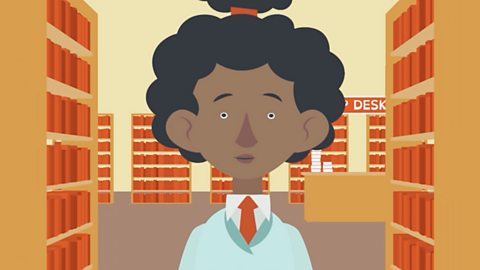Video summary
This video contains cartoon characters with voiceovers from children reading statements about why people might start behaving like a bully.
They explain that there is no one single reason.
The video ends with the statement ÔÇśDonÔÇÖt be someone different from who you are.'
Video: 1 mins 30 secs
Learning objectives
(from the set out by the UK Council for Internet Safety)
ÔÇśI can recognise online bullying can be different to bullying in the physical world and can describe some of those differencesÔÇÖ
ÔÇśI can recognise when someone is upset, hurt or angry online
ÔÇśI can give examples of how bullying behaviour could appear online and how someone can get supportÔÇÖ
- ÔÇśI can describe ways people can be bullied through a range of media (e.g. image, video, text, chat)ÔÇÖ
Glossary
Peer pressure: when your peers (people who are similar to you ÔÇô the same age, in the same class etc) try andpersuade you to behave in a particular way - usually the same as them ÔÇô and sometimes make you feel bad if youdonÔÇÖt
Rumours: information or a story that is passed around a group of people but might not be true
Topic introductions and starters
Before the video:
- Ask pupils to write down their current understanding of the key phrases and words from the glossary - either independently or in pairs with discussion
After the video:
- Check new understanding of the key vocabulary and correct any misconceptions
- Re-watch the video and write down each statement made by the young people
- Try and summarise each statement in just a few words
- In pairs, ask pupils to write two speech bubbles, one starting with ÔÇťI started bullying becauseÔÇŽÔÇŁ and the other ÔÇťWhen I was bullied, I feltÔÇŽÔÇŁ
- Look at the comments about the video and ask pupils to write some of their own ÔÇô thinking about the commenting rules
Discussion Points
Are bullies always really horrible people? Can a nice person turn into a bully?
Should we try and forgive bullies? It might help them feel less like a bully. Bullies need friends too
Once a bully, always a bully Can a bully ever stop? Should we try and help them or just report them?
Fillers and fast finisher activities
- Use the summarised statements from the previous section to make an illustrated list of reasons why people might become bullies
- Draw a diagram or a mind map (using pencil and paper or digital publishing or mindmapping tools) that connects up some of the reasons people might become bullies ÔÇô explore patterns and cycles
- Create an acrostic poem or article using the letters BULLY or CYBERBULLY as the first letters of each line
- Use screenshots from the video and add your own speech bubble and statement about why people become bullies
- Role play: various scenarios where bullies explain their reasons for bullying to someone who responds positively and kindly. Use scenario cards to stop the role play becoming personal ÔÇô people must stick to the roles on the cards ÔÇô take them from thestatements in the video or from the speech bubble activity
- Role play: a scenario where one participant tries to persuade the other to join in with bullying and they resist, giving reasons why it is a bad idea.
Signposting potential homework activities
- Write a short play, story or cartoon strip about someone struggling with the idea of being a bully and trying to get help from friends, peers and adults
- Create a poster or leaflet aimed to help people understand why some people turn to bullying behaviours
- Make a word search or crossword puzzle using key words from this topic for your classmates to try in school.
For download/printing

More on: Managing online information
What to do if you're being bullied. document
An article giving tips and advice for anyone who is being bullied.

Bullying - how to ask for help. video
Children talk about their experiences of speaking up and getting help with bullying.

How to stop bullying. document
An article providing practical solutions for anyone experiencing bullying.
